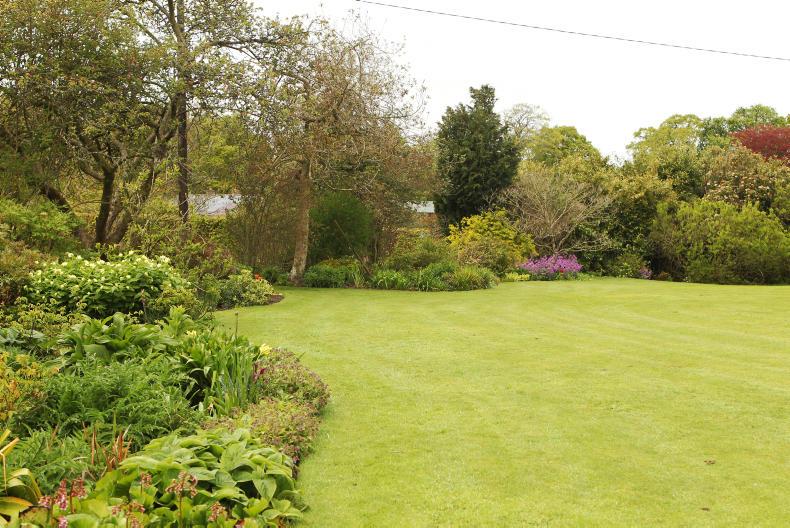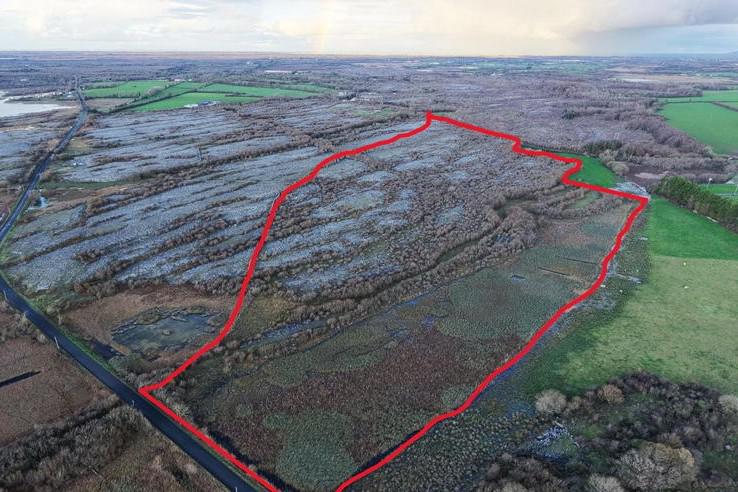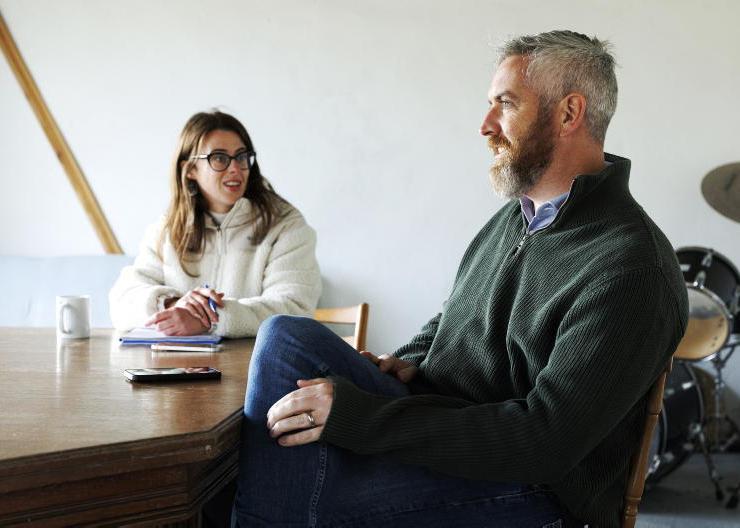After a wet, stormy and generally miserable few months, we are now seeing signs that spring will soon be ready to jump into action. However, the winter just past is likely to have taken a toll on most lawns this year. A combination of water logged, saturated soils and localised compaction over the past few months may have left your lawn worse for wear.
But spring brings with it warmer weather and longer days which means it’s time to start the process of rejuvenating your lawns once again. Grass is a highly resilient plant and Ireland happens to be one of the best places in the world for growing it. Moderate temperatures, good soil and plenty of moisture mean that grass will thrive when given the right conditions.
So with a little effort you can get your lawn back into shape this spring. Below are a number of simple steps which you can take to help get the most from your lawns. The first step in any lawn however is to find the areas which need to be addressed and identify the problems.
Problem: While there may be some biodiversity benefits from allowing dandelions, plantains and daisies to grow in your lawn, these weeds will compete with your grass for nutrients, light and water. If left uncontrolled, weeds can smother out your grass.
Solution: For many gardeners, pulling the weeds (including the roots) by hand and using other mechanical destruction tools can be the most effect. Over-the-counter herbicides are also available but remember to follow the label instructions carefully. Any herbicide which needs to be applied with a knapsack requires the operator to be fully trained and registered with Department of Agriculture.
Problem: Thatch describes the thick brown layer of dead material at the base of you grass. It develops in your lawn when organic debris is produced faster than it can be broken down. If thatch is too thick, it can limit the availability of water, air and nutrients needed by the roots of your grass. So just like our skin, sometimes we have to exfoliate our lawns to remove some of the dead material.
Solution: Thatch can be easily removed through scarification. For larger areas, a machine can be hired which basically scratches out most of the material. For smaller areas you can use a tine rake to do a similar job. Removing thatch will initially make your lawn look poorly but with some TLC, your grass will recover.
Problem: If your lawn doesn’t have the food it needs when it needs it, then your grass won’t thrive. Nutrient hungry grass will generally be thinner and pale in colour and won’t recover well if damaged. Your lawn needs a consistent supply of essential nutrients such as N (Nitrogen), P (Phosphorus), K (Potassium) and S (Sulphur) among others.
Solution: Nutrients can be supplied through spreading a preformulated garden fertiliser found in your local garden centre but be careful not to over apply. Applying organic sources such as compost and mulch will also help improve soil structure and provide a source of slow release nutrients. Cutting your lawn regularly and leaving the clippings on the lawn will also provide a natural source of organic matter to feed your lawn.
Problem: Bare patches in lawns can be caused by any number of reasons including compaction, nutrient deficiency, weeds and many more. There are a number of measures you can do to halt the thinning of your lawn.
Solution: the first step is to limit traffic over the bare patch on order to give remaining grass in the area every chance to regenerate. Applying some nutrients may help with this. Where necessary, overseeding may boost the plant populations.
When conditions are good, scratch the surface, spread the grass seed, rake it and water it. Avoid walking on this area for several weeks and watch for weeds. Once established, cut this area regularly and leave the cuttings to encourage the grass to thicken up.
Problem: When you compact soil you squeeze its particles which reduces the spore space available for air and water. This limits root development, can lead to water logging, erosion and makes life difficult for soil biota.
Solution: Aerating compacted lawns can open up the soil structure and get some oxygen to the roots. This is done by creating multiple holes in the ground using an aerator machine or manually using a handheld tines.
Problem: Shade caused by trees, shrubs or fences can cause your lawn to become pale, weak and thin and lead to the emergence of moss.
Solution: Think carefully before planting trees or shrubs about the impact shade may have on your lawn. If shade from established plants is big problem in lawns then consider trimming them back.
After a wet, stormy and generally miserable few months, we are now seeing signs that spring will soon be ready to jump into action. However, the winter just past is likely to have taken a toll on most lawns this year. A combination of water logged, saturated soils and localised compaction over the past few months may have left your lawn worse for wear.
But spring brings with it warmer weather and longer days which means it’s time to start the process of rejuvenating your lawns once again. Grass is a highly resilient plant and Ireland happens to be one of the best places in the world for growing it. Moderate temperatures, good soil and plenty of moisture mean that grass will thrive when given the right conditions.
So with a little effort you can get your lawn back into shape this spring. Below are a number of simple steps which you can take to help get the most from your lawns. The first step in any lawn however is to find the areas which need to be addressed and identify the problems.
Problem: While there may be some biodiversity benefits from allowing dandelions, plantains and daisies to grow in your lawn, these weeds will compete with your grass for nutrients, light and water. If left uncontrolled, weeds can smother out your grass.
Solution: For many gardeners, pulling the weeds (including the roots) by hand and using other mechanical destruction tools can be the most effect. Over-the-counter herbicides are also available but remember to follow the label instructions carefully. Any herbicide which needs to be applied with a knapsack requires the operator to be fully trained and registered with Department of Agriculture.
Problem: Thatch describes the thick brown layer of dead material at the base of you grass. It develops in your lawn when organic debris is produced faster than it can be broken down. If thatch is too thick, it can limit the availability of water, air and nutrients needed by the roots of your grass. So just like our skin, sometimes we have to exfoliate our lawns to remove some of the dead material.
Solution: Thatch can be easily removed through scarification. For larger areas, a machine can be hired which basically scratches out most of the material. For smaller areas you can use a tine rake to do a similar job. Removing thatch will initially make your lawn look poorly but with some TLC, your grass will recover.
Problem: If your lawn doesn’t have the food it needs when it needs it, then your grass won’t thrive. Nutrient hungry grass will generally be thinner and pale in colour and won’t recover well if damaged. Your lawn needs a consistent supply of essential nutrients such as N (Nitrogen), P (Phosphorus), K (Potassium) and S (Sulphur) among others.
Solution: Nutrients can be supplied through spreading a preformulated garden fertiliser found in your local garden centre but be careful not to over apply. Applying organic sources such as compost and mulch will also help improve soil structure and provide a source of slow release nutrients. Cutting your lawn regularly and leaving the clippings on the lawn will also provide a natural source of organic matter to feed your lawn.
Problem: Bare patches in lawns can be caused by any number of reasons including compaction, nutrient deficiency, weeds and many more. There are a number of measures you can do to halt the thinning of your lawn.
Solution: the first step is to limit traffic over the bare patch on order to give remaining grass in the area every chance to regenerate. Applying some nutrients may help with this. Where necessary, overseeding may boost the plant populations.
When conditions are good, scratch the surface, spread the grass seed, rake it and water it. Avoid walking on this area for several weeks and watch for weeds. Once established, cut this area regularly and leave the cuttings to encourage the grass to thicken up.
Problem: When you compact soil you squeeze its particles which reduces the spore space available for air and water. This limits root development, can lead to water logging, erosion and makes life difficult for soil biota.
Solution: Aerating compacted lawns can open up the soil structure and get some oxygen to the roots. This is done by creating multiple holes in the ground using an aerator machine or manually using a handheld tines.
Problem: Shade caused by trees, shrubs or fences can cause your lawn to become pale, weak and thin and lead to the emergence of moss.
Solution: Think carefully before planting trees or shrubs about the impact shade may have on your lawn. If shade from established plants is big problem in lawns then consider trimming them back.










SHARING OPTIONS